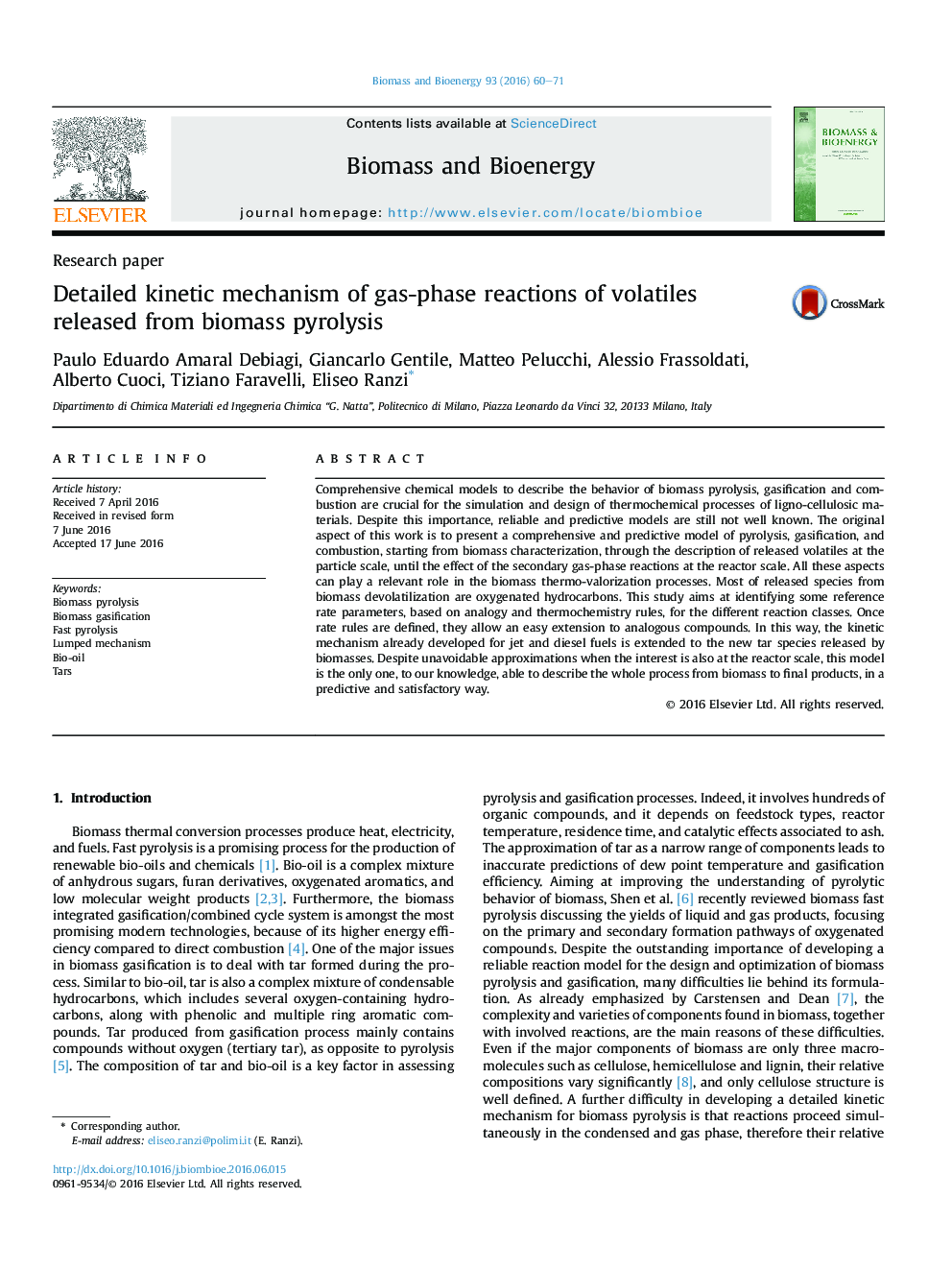| کد مقاله | کد نشریه | سال انتشار | مقاله انگلیسی | نسخه تمام متن |
|---|---|---|---|---|
| 7063157 | 1459800 | 2016 | 12 صفحه PDF | دانلود رایگان |
عنوان انگلیسی مقاله ISI
Detailed kinetic mechanism of gas-phase reactions of volatiles released from biomass pyrolysis
ترجمه فارسی عنوان
مکانیزم مکانیکی واکنش های فاز گازهای فرار از بیرونی زیست توده
دانلود مقاله + سفارش ترجمه
دانلود مقاله ISI انگلیسی
رایگان برای ایرانیان
کلمات کلیدی
پیرولیز زیست توده، گازسیون زیست توده، پیرولیز سریع مکانیزم لمسی روغن زیتون، تار،
ترجمه چکیده
مدل های شیمیایی جامع برای توصیف رفتار پیرولیز زیست توده، گازسیون و احتراق برای شبیه سازی و طراحی فرایندهای ترموشیمیایی مواد لیگن سلولزی بسیار مهم هستند. با وجود این اهمیت، مدل های قابل اعتماد و پیش بینی شده هنوز شناخته شده نیستند. جنبه اصلی این کار این است که یک مدل جامع و پیش بینی کننده پیرولیز، گازسیون و احتراق ارائه دهیم، با شروع از مشخص شدن خصوصیات زیست توده، از طریق شرح لکه های منتشر شده در مقیاس ذرات، تا اثر واکنش های فاز گاز دیگر در مقیاس راکتور تمام این جنبه ها می توانند نقش مهمی در فرایندهای گرمازدایی زیست توده داشته باشند. اکثر گونه های آزاد شده از تجزیه زیست توده ها، هیدروکربن های اکسیژن هستند. این مطالعه با هدف شناسایی تعدادی از پارامترهای نرخ مرجع، بر اساس قواعد قیاسی و ترمو شیمیایی برای کلاس های واکنش متفاوت است. هنگامی که قوانین نرخ تعریف می شود، آنها اجازه می دهد تا گسترش آسان به ترکیبات مشابه. به این ترتیب، مکانیزم جنبشی که در حال حاضر برای سوخت های جت و دیزلی توسعه یافته است، به گونه های جدید تربیتی آزاد شده توسط بیوماس گسترش می یابد. علیرغم مقادیر اجتناب ناپذیری که منافع نیز در مقیاس رآکتور وجود دارد، این مدل تنها برای ما شناخته شده است، قادر به توصیف کل روند از زیست توده به محصولات نهایی در یک روش پیش بینی کننده و رضایت بخش است.
موضوعات مرتبط
مهندسی و علوم پایه
مهندسی شیمی
تکنولوژی و شیمی فرآیندی
چکیده انگلیسی
Comprehensive chemical models to describe the behavior of biomass pyrolysis, gasification and combustion are crucial for the simulation and design of thermochemical processes of ligno-cellulosic materials. Despite this importance, reliable and predictive models are still not well known. The original aspect of this work is to present a comprehensive and predictive model of pyrolysis, gasification, and combustion, starting from biomass characterization, through the description of released volatiles at the particle scale, until the effect of the secondary gas-phase reactions at the reactor scale. All these aspects can play a relevant role in the biomass thermo-valorization processes. Most of released species from biomass devolatilization are oxygenated hydrocarbons. This study aims at identifying some reference rate parameters, based on analogy and thermochemistry rules, for the different reaction classes. Once rate rules are defined, they allow an easy extension to analogous compounds. In this way, the kinetic mechanism already developed for jet and diesel fuels is extended to the new tar species released by biomasses. Despite unavoidable approximations when the interest is also at the reactor scale, this model is the only one, to our knowledge, able to describe the whole process from biomass to final products, in a predictive and satisfactory way.
ناشر
Database: Elsevier - ScienceDirect (ساینس دایرکت)
Journal: Biomass and Bioenergy - Volume 93, October 2016, Pages 60-71
Journal: Biomass and Bioenergy - Volume 93, October 2016, Pages 60-71
نویسندگان
Paulo Eduardo Amaral Debiagi, Giancarlo Gentile, Matteo Pelucchi, Alessio Frassoldati, Alberto Cuoci, Tiziano Faravelli, Eliseo Ranzi,
